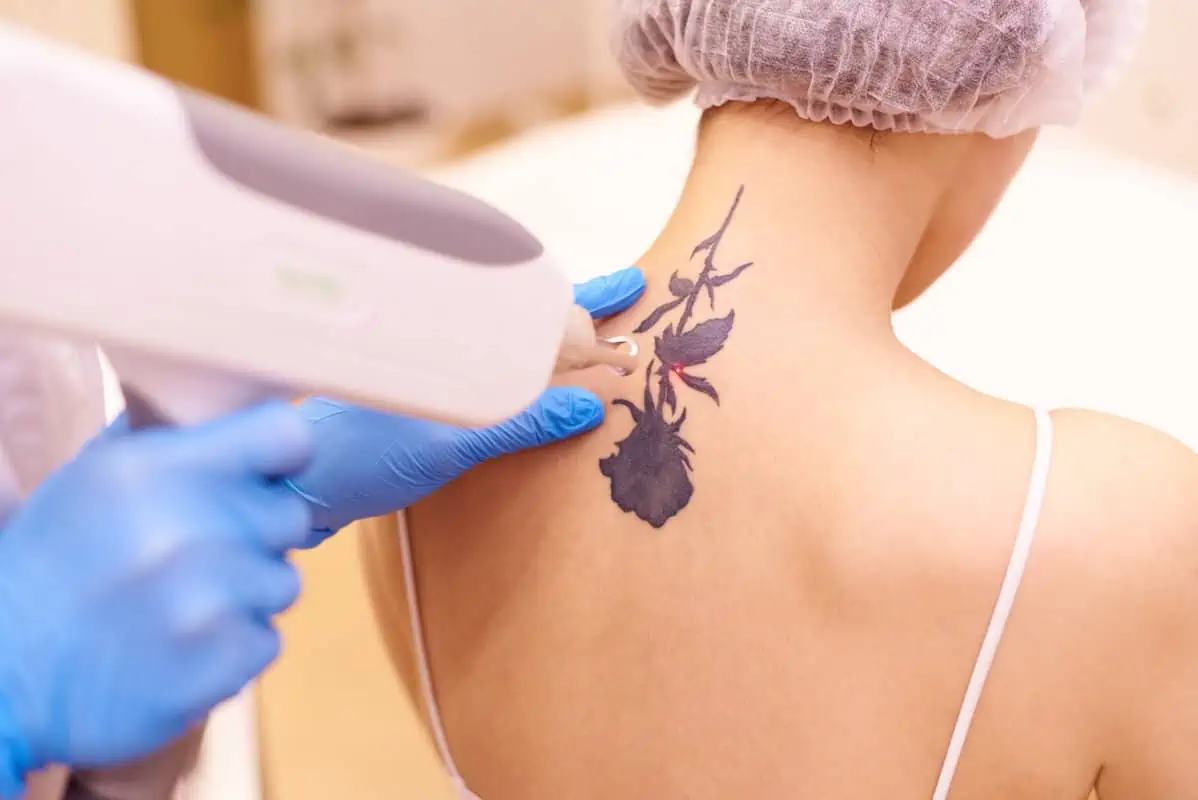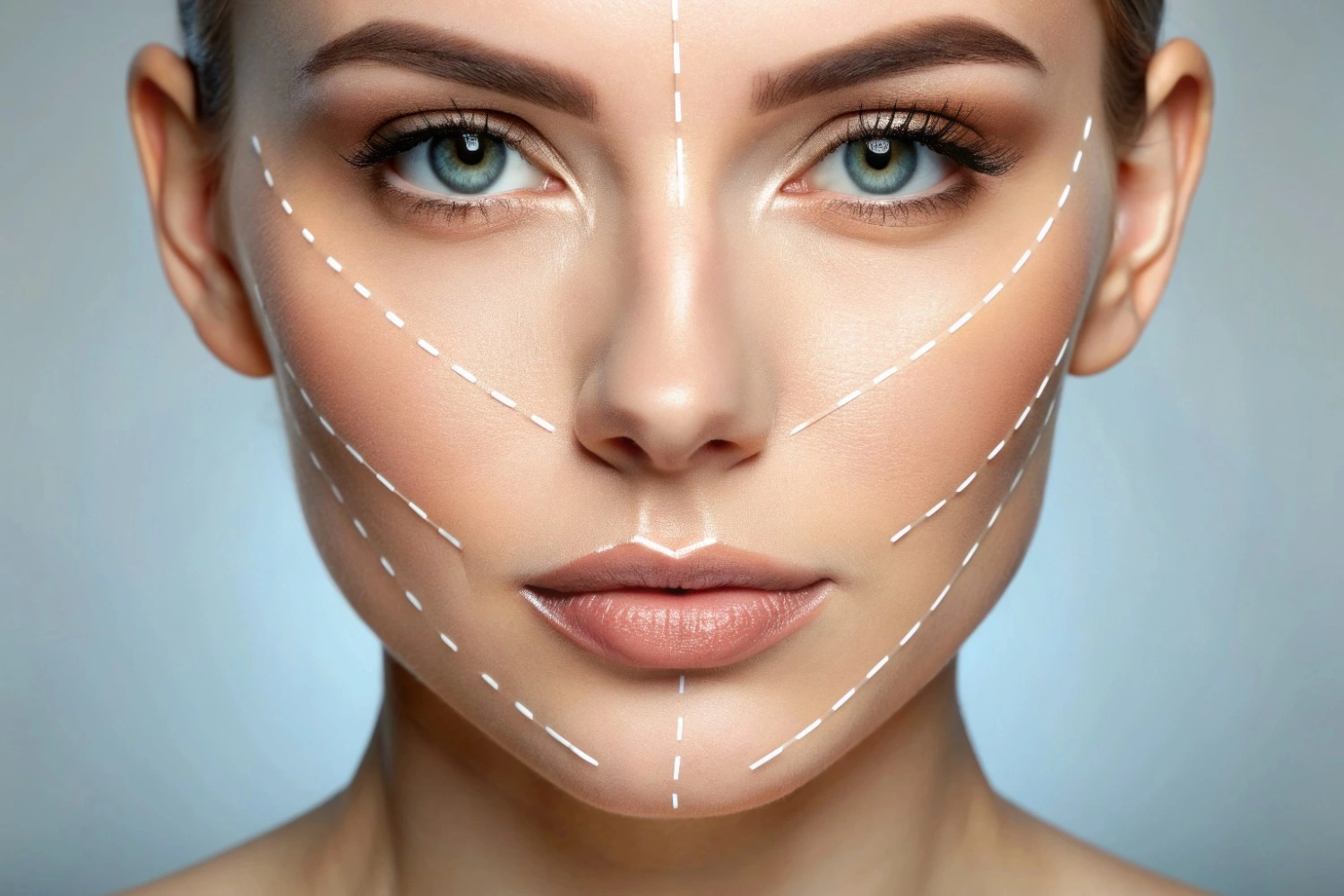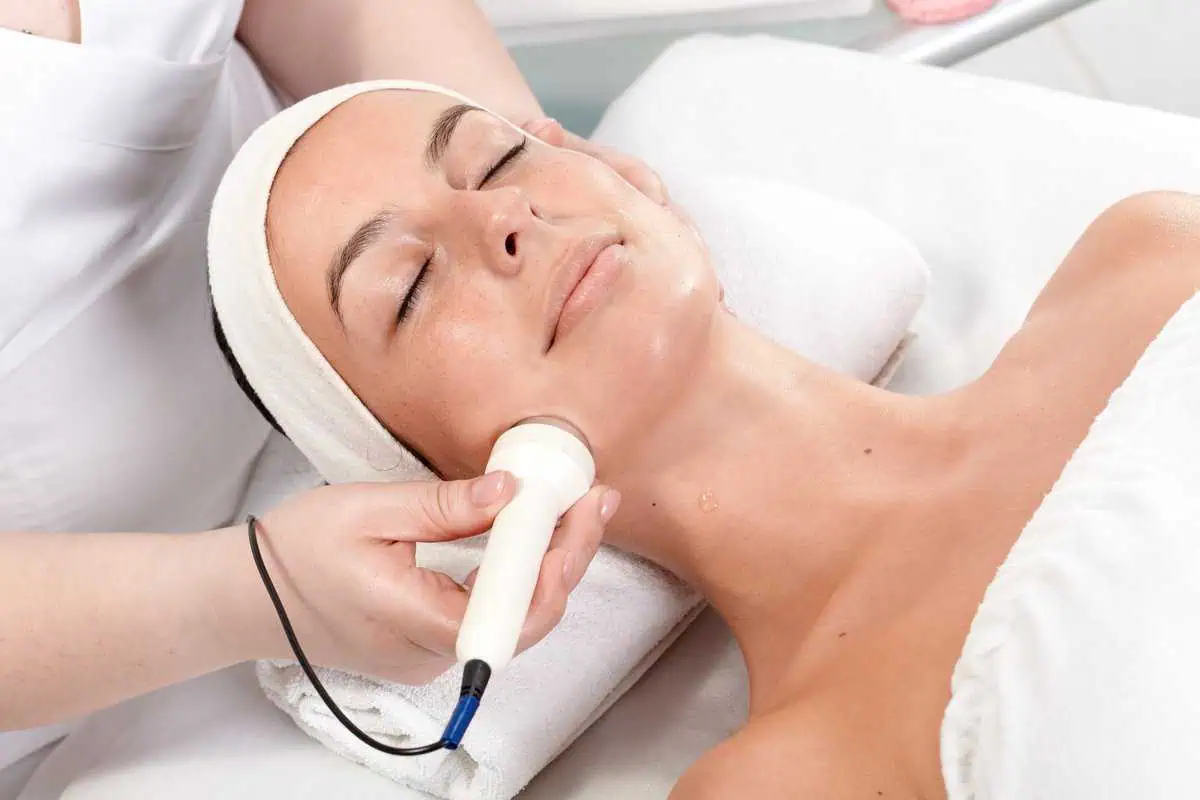Tattoo removal with lasers is straightforward for those looking to erase unwanted tattoos. This method uses concentrated laser energy to break down tattoo ink, which the body naturally eliminates. Unlike some older tattoo removal techniques, laser removal is known for being more effective and less invasive. The time frame for tattoo removal is subject to variation influenced by multiple determinants, including the dimensions and chronological age of the tattoo, the spectrum of colors it contains, and the specific dermatological characteristics of the individual.
What is Tattoo Removal?
The principle behind laser tattoo removal is relatively straightforward. The laser emits concentrated light energy, absorbed by the tattoo ink particles trapped in the skin. This absorption causes the ink particles to heat up and shatter into smaller fragments. Once these ink particles are broken down, the body’s immune system naturally takes over, flushing away the smaller pieces over time. This gradual fading process is what eventually erases the tattoo.
The effectiveness of laser tattoo removal largely hinges on the principle of selective photothermolysis. This concept is crucial for ensuring that the laser targets the tattoo ink specifically while minimizing damage to the surrounding skin. The process involves using laser light at specific wavelengths that are preferentially absorbed by different ink colors in the tattoo. This selective absorption is critical because it affects how effectively the laser can remove different colors.
Factors Affecting Laser Tattoo Removal Process
These elements, ranging from the inherent characteristics of the tattoo to the individual’s unique physiological responses, collectively shape the trajectory and outcome of the removal process.
- Size and Location of the Tattoo:
-
- Size: Larger tattoos require more treatment sessions for complete removal, as there is more ink to break down.
- Location: Tattoos situated further from the heart, like on the hands or feet, often fade more slowly. This occurs because of lower blood circulation in these areas, which results in a slower process of removing ink particles from the body.
- Color of the Ink:
-
- Dark Colors: Black and darker inks absorb all laser wavelengths, making them easier to target and break down.
- Light Colors: Lighter colors, such as yellows, greens, and certain blues, can be more stubborn. These hues may necessitate lasers with specific wavelengths and potentially more sessions for effective removal.
- Age of the Tattoo:
-
- Older tattoos generally respond better to laser treatment. Over time, the body naturally absorbs some of the ink, and the remaining particles are more dispersed and accessible to eliminate.
- Ink Density and Depth:
-
- Tattoos with heavy ink coverage or those where the ink is deeply entrenched in the skin can pose more of a challenge. Such tattoos often require a layered approach in the removal process, addressing the ink layer by layer.
- Individual’s Skin Type and Health:
-
- The effectiveness of laser treatment can vary with skin types, healing capacities, and the strength of the individual’s immune system. These factors influence how well the skin responds to the laser and how efficiently the body can process and remove the fragmented ink particles.
- Expertise of the Practitioner:
-
- The skill and experience of the professional conducting the removal are paramount. A knowledgeable practitioner can precisely adjust laser settings to suit each unique tattoo, ensuring optimal results while minimizing potential damage to the surrounding skin.
Time Frame for Tattoo Removal
The duration of tattoo removal with laser technology varies considerably, as it is not a uniform process and depends on various factors.
- Initial Consultation to Treatment Start:
-
- The process begins with an initial consultation. This is when a professional evaluates the tattoo and discusses relevant factors such as skin type, details, and health considerations. The time from this consultation to the start of the treatment can vary, typically ranging from a few days to several weeks, depending on the clinic’s schedule and any preparatory steps needed.
- Duration of Each Session:
-
- Each laser session usually lasts 15 to 30 minutes, although this can vary. Larger or more complex tattoos might require longer sessions. The procedure is relatively quick, but the frequency and total number of sessions extend the timeline.
- Number of Sessions:
-
- The total number of sessions needed is highly variable. On average, it can be anywhere from 5 to 10 sessions, but some tattoos, especially those with more complex ink colors or greater density, may require more. Factors such as the age of the tattoo, the colors used, and the depth of the ink play a significant role in determining the number of sessions.
- Interval Between Sessions:
-
- Typically, there is a 6 to 8-week gap between sessions. This interval is crucial for skin healing and allows the body time to flush away the fragmented ink particles. Reducing the time between sessions is not advised, as it may heighten the risk of skin damage and doesn’t typically hasten the removal process.
- Post-Treatment Period:
-
- After the final laser session, the tattoo doesn’t disappear immediately. The body continues to break down and absorb the ink particles, which can take several months. During this time, the appearance of the tattoo will gradually change and fade.
- Overall Time Frame:
-
- Considering all these factors, the complete laser tattoo removal process typically spans a year to several years. It’s a long-term commitment that requires patience
and a clear understanding of the process.
The time frame for laser tattoo removal is a prolonged and variable one, heavily dependent on individual circumstances and the specifics of the tattoo in question. It’s a process that requires a significant commitment to multiple treatment sessions and patience for the body to eliminate the broken-down ink naturally.
Preparing for Laser Tattoo Removal
Preparing for laser tattoo removal involves several vital steps to ensure safety and effectiveness. It starts with a detailed consultation to discuss your medical history and skin condition, which is crucial for tailoring the treatment.
Skin care is critical; keeping the tattooed area clean and protected from sun exposure is essential. This means applying sunscreen regularly to avoid sunburns, which can sensitize the skin. Staying hydrated and maintaining good health, including avoiding smoking and excessive alcohol, aids in recovery and effectiveness. On the day of the procedure, the area should be free of lotions, perfumes, or makeup. Comfortable clothing for easy access to the tattooed area is also recommended.
Takeaway
Ready to embark on your journey towards clear, ink-free skin? Contact Tenth Avenue Aesthetics today to schedule your assessment for laser tattoo removal. Our team of skilled professionals is dedicated to providing you with a safe, effective, and personalized treatment plan. Don’t let an unwanted tattoo hold you back any longer.







